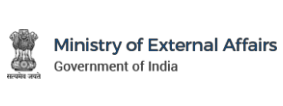Washington, DC
June 12, 2012
Mr. Micahel Froman, Deputy Assistant to the President and Deputy NSA for International Affairs,
Mr. Terry McGraw, Outgoing Chairman of USIBC,
Mr. Ajay Banga, Incoming Chairman of USIBC,
Mr. Rony Somers, President, USIBC
Mr. Adi Godrej, President, Confederation of Indian Industry,
Mr. Francisco D’Souza and Mr. Rajesh Subramaniam, Board Members, USIBC, and
Distinguished guests
I am honoured to speak at the annual summit of U.S.- India Business Council. I thank Mr. Froman for his leadership on promoting economic relations. I also thank the outgoing Chairman Terry McGraw for ably focusing on current challenges and pointing us to long term opportunities. I congratulate Ajay Banga for taking over the reins of the Council at an important juncture in our commercial engagement. His life and career embodies everything that infuses India-U.S. relationship with so much promise and potential.
U.S.-India Business Council was formed at a particularly difficult moment in our relationship in the mid-seventies. The initiative was both economic and strategic in nature. It rested on the logic that in pursuing closer economic relationship, our companies, entrepreneurs and professionals would serve as a bridge to a broader and deeper relationship between our countries.
Nearly four decades later that vision has met the test of time. The private sector in our two nations has been the harbinger of change, indeed one of the catalysts in the transformation of India-U.S. relationship into a strategic partnership of great depth and diversity. The ballast our businesses provide will continue to keep our relationships growing steadily and rapidly. And, I hope that the U.S.- India Business Council will continue to promote India as much as the U.S. in its endeavors.
This is a time of vulnerability and uncertainty in the global economy. This is also a phase of challenges and opportunities for our two economies, too.
In India, there are evident concerns about economic parameters. Measures taken in response to an earlier phase of the global economic crisis, international turbulence and volatility, and policy challenges, have all contributed to the current situation. There are also complex and unresolved issues of equity, sustainability and opportunities and achieving the right balance between various sectors of the economy – these issues have been at the heart of political and policy debate in India.
Questions have been raised about economic policy and commitment to implement reforms. Doubts have been expressed whether the story of Incredible India will remain credible!
These sentiments are not new. Over the past two decades of extraordinary change in the Indian economy, there have been periods when the growth seemed to lose its steam and the agenda of reform seemed to slow. But, time and again, our economy rebounded with new vigor, on the strength of strong fundamentals, and supported by sound policies and prudent economic management.
In an era of global inter-dependence, not everything is within the powers of national governments. But we are confident that we will restore investor confidence and regain economic momentum and growth.
Our confidence stems not just from the strong fundamentals of our economy, but, also from the fact that virtually every political party in India has been at some point part of the reform process. We have to respond to the aspirations of an increasingly young, empowered and energised India that has experienced enormous change in a short span of time, and we will do so. But, we will also need a stable and supportive international environment, including an open and growing U.S. market, and the flow of capital and technology.
We are also optimistic because we are purposefully seeking to shape our external environment in support our national development goals. There are stirrings of change in our neighbourhood. We are working with Pakistan to define a new paradigm of trade relations. We are supporting Afghanistan with investment, development partnership and regional integration. We will host an investors’ conference at the end of June in Delhi, to which, I hope, some of you will come. Across South Asia, we are seeking relationship of shared prosperity through increased trade, assistance and connectivity.
With Myanmar, we are not only rediscovering our natural economic partnership, but also building a bridge to Southeast Asia, with which we have a robust and matured economic engagement. We are building strong economic ties and seeking improved market access with China. Our exports to West Asia have expanded at a faster rate than our imports from there.
The vision of bringing Central Asia’s gas to South Asia is turning into a reality, but our connection with the region will go beyond hydrocarbons. From Australia to Africa, our businesses are seeking new sources of minerals and energy, but we also see ourselves as partners in the development of industry, infrastructure and human resources, particularly in Africa.
North America has emerged as an important source of gas and potentially of oil for world markets, and we hope that the U.S. Government will be liberal in permitting gas exports to India. This will be in our mutual economic and energy security interests. And, we are building a web of trade and economic arrangements that stretches from Japan to Canada.
I also have great confidence in the future of India-U.S. economic partnership. I know that this is a time when a degree of skepticism has entered into the sentiment of the business on both sides. I am aware of the concerns of the U.S. businesses; USIBC has been forceful in articulating them !
For our businesses, too, there are pressing issues: whether it is the worsening environment for mobility of professionals, the protectionist sentiments against the global supply chain in services industry, the refusal to even consider a Social Security Agreement that affects the lives of 300,000 non-immigrant Indian professionals in the United States, the unresolved market access issues, or, the persisting presence of India in the Super 301 Priority Watch List and the U.S. Department of Labour’s list.
It is, in part, natural, if not inevitable, that as our economic engagement grows; the range of issues that we face will also expand. But, it is also true, that as our inter-dependence deepens, it becomes even more important to address the issues with a sense of urgency and purpose.
The progress that we have made gives us the confidence to deal with the challenges in our relationship. Our trade in goods and services has reached a milestone by crossing 100 billion US dollars last year. India has been one of the fastest growing destinations for U.S. exports.
The U.S. remains a major source of investment in India. Indian companies, too, have established presence in at least 40 states in the U.S, with a significant part of their investments going into the manufacturing sector, and generating more than 80% of their employment locally from the United States.
We have recently launched a strategic dialogue on energy security. We have agreed on a dialogue on sustainable manufacturing and on standards. Later this month, our Finance Minister will lead the Financial and Economic Partnership Dialogue. We are negotiating a Bilateral Investment Treaty and we have just had another round of extensive dialogue last week in Delhi.
A decade ago, lack of familiarity, trust and confidence made U.S. industry an unlikely partner for our defence requirement. Now, in the last four years, defence contracts for U.S. companies have amounted to nine billion US dollars. As we seek to expand this relationship further, it must increasingly rest on the foundation of technology transfer, as well as joint research, development and production.
We remain committed to transforming the success of our diplomatic partnership in changing the global nuclear order into an equally fruitful commercial partnership. We welcome the ongoing progress in the dialogue between Indian operator and the U.S. companies. Our high technology trade will also grow as the Indian industry grows in sophistication and begins to take advantage of liberalization in U.S. export controls for India.
India’s planned investment of more than a trillion US dollars in infrastructure development over the next five years offers enormous opportunities for expanding our economic partnership. Commerce Secretary Bryson’s visit to India with a strong infrastructure delegation this March and the launch of first Infrastructure Debt Fund in India, with a corpus of 2 billion US dollars, augurs well for our cooperation.
In the coming years, one of the largest waves of urbanization in the world will take place in India. This alone will create enormous economic opportunities, from smart grid to energy efficient buildings to the recently launched Dunkin Donuts!
I have faith in the future of India-U.S. economic partnership, because I have seen, from my time as the Chief Minister in Bangalore, pioneering models of partnerships between Indian and U.S. firms. These ventures have helped modernize India’s economy and shaped the global knowledge economy. They have also made enormous contribution to U.S. economy and employment. We, in India, have to foster an environment that nurtures these collaborations. The U.S. too, I hope, will remain supportive of these models of partnership.
I am also inspired by the outstanding partnerships of innovation, research and development that are being forged across a truly broad range of areas. These include healthcare; agricultural productivity and the cold supply chain; clean and renewable energy and energy efficiency; higher education; and, delivery of services. They are generating hope, transforming lives, creating prosperity and addressing global challenges.
Their impact encourages us to set higher ambitions. And, working with the industry, we can set our sights even higher. Indeed, the areas I have mentioned are also the priorities identified by the India-U.S. CEO Forum and will command a lot of attention at the Strategic Dialogue tomorrow.
Indeed, the power of innovation would be the driver of our economic partnership. Its success will be measured not only in terms of growth, but also its capacity to usher in change.
A strong economic relationship is an important dimension of the vision of global partnership outlined by Prime Minister Dr. Manmohan Singh and President Obama. It is a partnership that continues to grow.
We are working together, and with others, to build a secure, stable and prosperous Asia Pacific and Indian Ocean regions, including through the evolving regional architecture. We consult each other regularly on all major regions and issues in the world. We are united in our political and diplomatic efforts to affirm the principles of freedom of navigation and unimpeded commerce, in accordance with international law, and peaceful settlement of maritime disputes. We are engaged in helping build a strong future for Afghanistan.
Our defence engagement is strong and growing, as underscored during Secretary Panetta’s visit to Delhi last week. Our intelligence and counter-terrorism cooperation is deepening, and we have shared interest in the elimination of terrorist infrastructure and safe havens from our neighbourhood.
Our growing cooperation on cyber security is important for our increasingly inter-dependent economies. We have productive engagement and growing cooperation in multilateral forums on international disarmament and non-proliferation. We appreciate the continuing U.S. leadership in seeking India’s full membership of the multilateral export control regimes.
India and the United States have built a comprehensive architecture of engagement. But, we have also built something more priceless – goodwill and friendship; mutual confidence and respect; and, candour and comfort in our dialogue; and a belief in the value of this relationship for our two countries and the importance of this partnership for the world.
Our high mutual expectations, natural in a relationship driven by values, lead to occasional disappointment. But, this only underscores that neither side is prepared to settle for what we have achieved, but continues to strive for more. And, it is my belief that once we have a relationship defined by those qualities, we will reach the destination we seek and achieve the goals we set for ourselves.
So, tomorrow, it will be my privilege to chair the third strategic dialogue with Secretary Clinton. It will be an opportunity to reaffirm our shared vision and values that brings our two countries together; to celebrate what we have achieved in the past three years and before; and, to renew our commitment and reinvigorate our efforts to keep striving towards the peak of our potential.
Thank you.
*****







